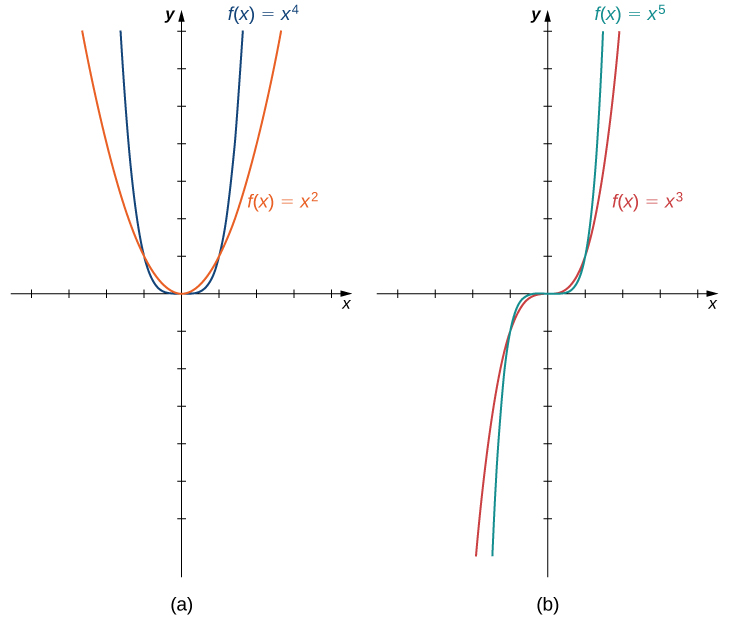| << Chapter < Page | Chapter >> Page > |
A linear function is a special type of a more general class of functions: polynomials. A polynomial function is any function that can be written in the form
for some integer and constants where In the case when we allow for if the function is called the zero function . The value is called the degree of the polynomial; the constant is called the leading coefficient . A linear function of the form is a polynomial of degree 1 if and degree 0 if A polynomial of degree 0 is also called a constant function . A polynomial function of degree 2 is called a quadratic function . In particular, a quadratic function has the form where A polynomial function of degree is called a cubic function .
Some polynomial functions are power functions. A power function is any function of the form where and are any real numbers. The exponent in a power function can be any real number, but here we consider the case when the exponent is a positive integer. (We consider other cases later.) If the exponent is a positive integer, then is a polynomial. If is even, then is an even function because if is even. If is odd, then is an odd function because if is odd ( [link] ).

To determine the behavior of a function as the inputs approach infinity, we look at the values as the inputs, become larger. For some functions, the values of approach a finite number. For example, for the function the values become closer and closer to zero for all values of as they get larger and larger. For this function, we say approaches two as goes to infinity,” and we write as The line is a horizontal asymptote for the function because the graph of the function gets closer to the line as gets larger.
For other functions, the values may not approach a finite number but instead may become larger for all values of as they get larger. In that case, we say approaches infinity as approaches infinity,” and we write as For example, for the function the outputs become larger as the inputs get larger. We can conclude that the function approaches infinity as approaches infinity, and we write as The behavior as and the meaning of as or can be defined similarly. We can describe what happens to the values of as and as as the end behavior of the function.
To understand the end behavior for polynomial functions, we can focus on quadratic and cubic functions. The behavior for higher-degree polynomials can be analyzed similarly. Consider a quadratic function If the values as If the values as Since the graph of a quadratic function is a parabola, the parabola opens upward if the parabola opens downward if (See [link] (a).)

Notification Switch
Would you like to follow the 'Calculus volume 1' conversation and receive update notifications?